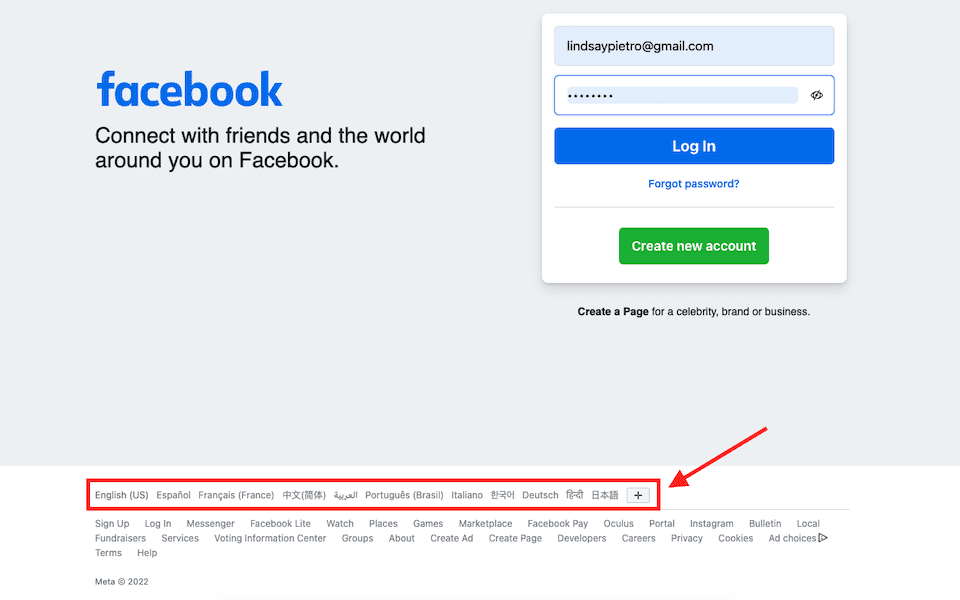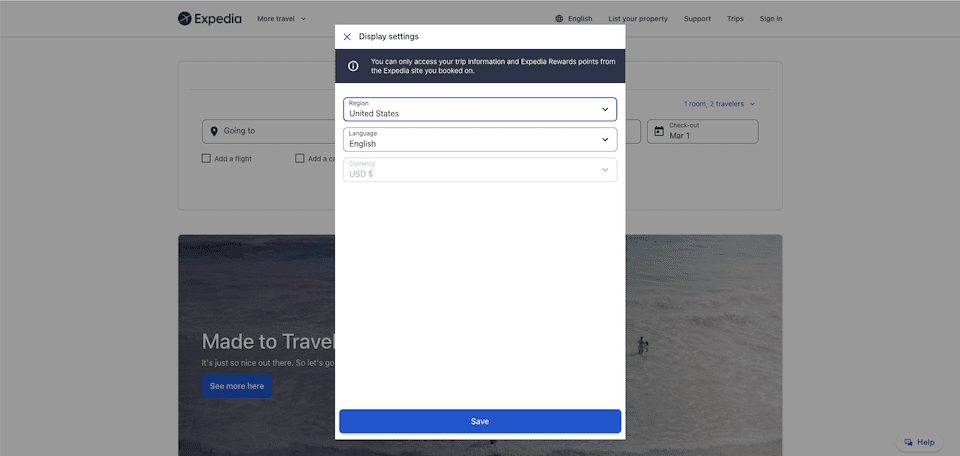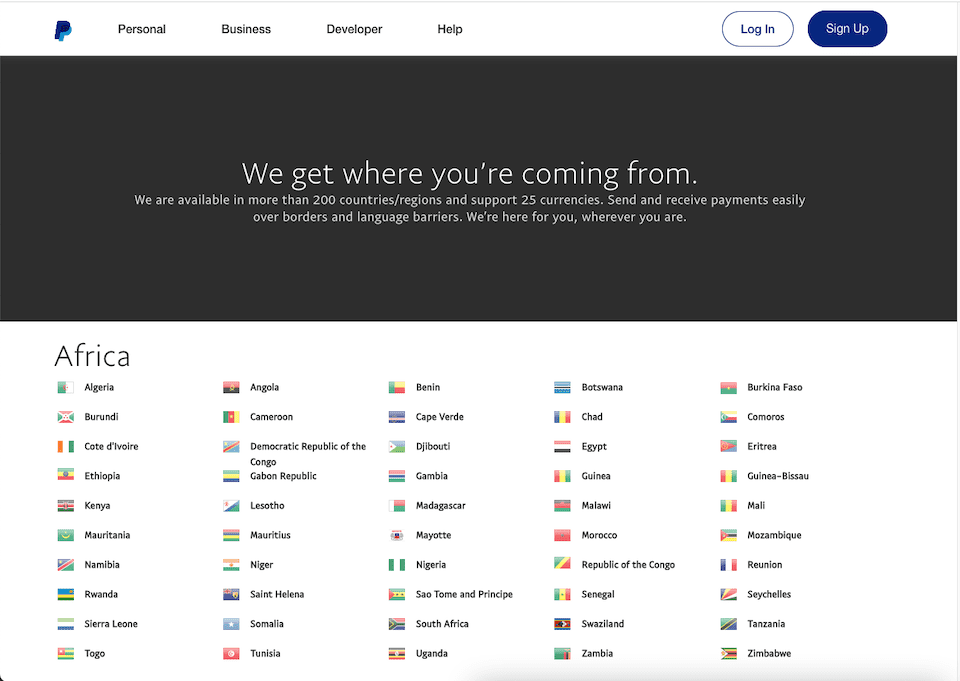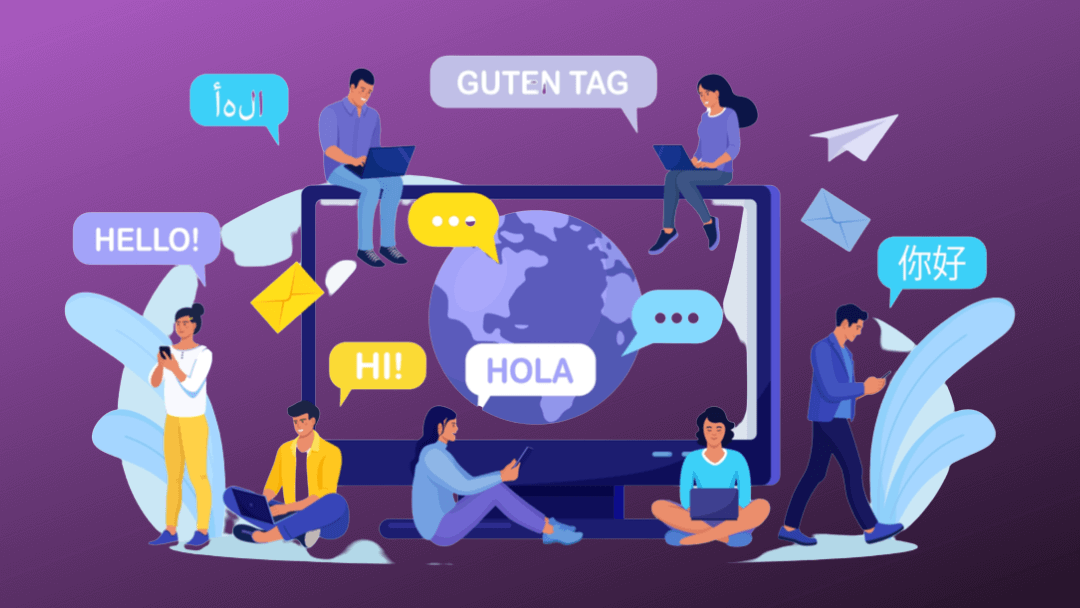To reach as wide an audience as you possibly can with your website, you may want to consider people who don’t speak the same language as you or who may live abroad. There are two major benefits to multilingual SEO and International SEO. First, your website will be searchable in new markets. That means that people who speak different languages or who live in different countries will be able to find your site through organic search. Second, you’ll likely improve your website rank in those specific regions or for those other languages.
When setting up a multilingual and/or international website, there are a lot of SEO components to consider. From making sure the correct webpage displays for your visitors to keeping Google happy by avoiding duplicate content, we’ll explain everything you need to know about multilingual and international SEO.
- 1 What Are Multilingual SEO and International SEO?
-
2
8 Tips for Improving Multilingual SEO and International SEO
- 2.1 1. Your Website May Not Require Multilingual or International SEO
- 2.2 2. Choose a URL Structure
- 2.3 3. Perform Fresh Keyword Research
- 2.4 4. Develop a Custom Content Strategy
- 2.5 5. Hire a Professional Translator
- 2.6 6. Use Hreflang Tags to Avoid Duplicate Content
- 2.7 7. Consider Adding Other Types of Language Headers
- 2.8 8. Decide How to Direct UserPreferences
- 3 Final Thoughts About Multilingual SEO and International SEO
What Are Multilingual SEO and International SEO?
First of all, “multilingual SEO” and “international SEO” aren’t the same things. They may sound like they are at first, but no.
Let’s say your audience is primarily based in the United States. In addition to English, you may want your website available in Spanish, since it’s the second-most-spoken language in the U.S. In that case, you need a multilingual website, but not an international website.
However, let’s say that you only target English speakers. In addition to U.S.-based users, your audience resides in Australia and the United Kingdom. In that case, you wouldn’t need a multilingual website, you’d need an international one.
And, of course, sometimes you’ll need both. There is still an overlap, even though the ideas are separate.
Multilingual SEO
With multilingual SEO, content is optimized for more than 1 language. This can be for a website with a presence in one country or multiple countries, depending on the languages spoken.
If your services are basically the same no matter where the user is, and if you target users who speak different languages, you only have to worry about multilingual content. Facebook does this because the service is the same no matter where it’s accessed, but the user base speaks different languages:

International SEO
With international SEO, content is optimized for different countries and may or may not be multilingual. A site like Expedia has options for both location and language, but you set them separately:

For international content, you can’t distinguish by region, just by country. For example, you can’t target Europe, but you can target different European countries. Setting that up on your own site is a little more complicated, but the returns can be well worth putting the effort into making a system like that.
8 Tips for Improving Multilingual SEO and International SEO
1. Your Website May Not Require Multilingual or International SEO
You have to decide if you need to go through the trouble of setting up multilingual SEO and/or international SEO. It’s not a must for every website owner. If it’s not necessary right now — if it won’t bring in conversions or a profit — your SEO efforts may be better elsewhere, since this is a big undertaking with a lot of room for error.
Multilingual and international SEO are especially important factors for e-commerce. Here’s why:
- You have to take into account national currencies, export duties, and shipping fees.
- Your available products need to meet the needs of different markets.
- The product descriptions may need to be different to cater to the interests of the customer base.
Google Analytics can help you determine where your website traffic is coming from. If you’re already reaching some people in multilingual or international markets, you can decide how to optimize your site to attract even more traffic. If you currently have a big international audience in one specific country, start there. Maybe 10% of your traffic comes from Germany and other countries 1-3%. That’s definitely worth focusing on German-language SEO first.
2. Choose a URL Structure
There are a few options when it comes to URL structure. Whichever one you pick, stick with it throughout your whole website.
ccTLD: This stands for “country code top-level domain,” which refers to the phrase at the end of the domain name. An example is domain extension .fr (the “fr” is for France). This is your best option for targeting different countries because it will help you rank for different locations.
Subdirectories: An example is website.com/fr. This may be your option if you’re targeting different countries and different languages or you’re only focusing on multilingual SEO. For hybrid targeting, the country code comes first, followed by the language. For example, website.com/mx/es for the Mexican version (mx) of the website in Spanish (es).
Subdomains: An example is fr.website.com. This isn’t usually recommended because the site structure can get overly complicated, making it hard for visitors to find what they’re looking for. Subdomains like this are considered separate sites by search engines (such as blog.wordpress.com or on.substack.com being different entities from the main site), and you want the search engines to see your site as a whole, not broken apart.
3. Perform Fresh Keyword Research
Keyword research for the region and/or language you’re targeting should be your first step in adapting your content strategy. Even if your content is valuable to both your native and your multilingual/international audience, the keywords you’re using may not be. An SEO professional who specializes in the language or country will help you with your keyword strategy. It’s also a good idea to do some competitor research to see what keywords they’re targeting. To keep track of your keyword performance, set up country-specific tracking in whatever tracking tool you use — Moz, Semrush, etc.
In addition to keyword ranking, you also want to keep a watch on URL ranking. This will be especially helpful in determining if a URL is ranking in the wrong country, which could point you to a hreflang issue (more on hreflang in a bit).
4. Develop a Custom Content Strategy
You’ll probably do some combination of translating your current content, creating new content to target your new audiences, and “transcreation,” which is a little of both. (Don’t forget to change content like the title, metadata, and headers, too.)
Translating Current Content: If you’ve determined that some of your content is fine as-is for a multilingual/international audience, you can have it translated without changing the keywords or content.
Creating New Content: This gives you the chance to take advantage of your keyword research, and you’ll also account for cultural differences and preferences.
Transcreation: With this method, you adapt existing content for a new audience. Maybe you update the focus keyword or replace some of the content to appeal to the region or culture better. The message of the content remains the same, but you will refresh it for the language or area to make it fit better.
More Content Strategy Considerations
- What is the purpose of each piece of content on the site? (Search intent might differ for the same content between countries.)
- Does every piece of content have a primary keyword?
- Is there content that can be localized to attract a broader or new audience?
- Is there new content that you should add specifically for your multilingual/international audience?
Lastly, in addition to adapting to cultural norms for your target countries, you also have to abide by local laws and requirements, like cookie tracking notifications, for example. And if you’re selling products, they have to be legal in those locations — sensitive items like alcohol, medicine, tobacco, and even produce can have bans or require special documentation.
5. Hire a Professional Translator
A tool like Google Translate is useful in a pinch, but you don’t want to rely on it to translate an entire website — or even an entire blog post. To keep your website quality high, you need a more reliable translation strategy.
Words often have different meanings based on the language or country. If you use a service that translates words as closely as possible using their literal meanings, you could lose the meaning of the content. Or accidentally publish an unintended message. It’s best to hire a professional translator or translation service that has a native grasp on both the website’s standard language and the one you’re translating the content into.
Having your content use genuine language builds trust with your international and multilingual users. Native speakers can easily pick out content that has been hastily created or translated poorly.
One of the biggest concerns with a multilingual or international site is duplicate content. When the same or very similar content appears on multiple URLs, it can compete against itself, which can harm ranking in SERPs. We have a more in-depth guide to duplicate content, but for our purposes in this article, know that the best way to avoid this is by using hreflang tags.
What Are Hreflang Tags?
Hreflang tags are most commonly inserted in the webpage header. (You can include the tag in the sitemap or HTTP header. But it’s best to choose one standard method for your entire site. Because of that, the page header option is your best bet.) The tag includes code that tells search engines which version of the page is meant for which country and/or language. That way, the search engine knows what to show a user based on their location and language settings. Hreflang tags look something like this (this example is for a French-language page in Canada):
<link rel="alternate" hreflang="fr-ca" href="http://website.com/fr/" />
Setting these tags is a complicated process, and you need to have pretty savvy SEO skills to handle it. It may be best to outsource this to a service that can handle it for you, or at least use a tool that can add the tags for you automatically.
Hreflang Best Practices
- Multiple Tags Per Page: If a page has more than one alternative — maybe it’s translated into three languages or it’s for two different countries. For example, multiple tags can be added to the header.
- Multiple Pages Per Tag: The tag has to be put on every page version. So if you have one page that’s translated into five languages, you need the code on all five pages.
- Self-Referencing Tag: You need to include a self-reference to the page where the code is implemented. For example, if you have a U.S. page that’s translated into French and Italian, you need three tags on each page: U.S. English, French, and Italian.
- Canonical URLs: Only canonical URLs can be included in the tags — that means the URL for the main page, not a duplicate. For a site based in the United States, that would be the URL for the U.S. version, not the French version.
- X-Default: This attribute is optional. It tells search engines which page to list in search results if none of the hreflang tags apply to the location/language.
7. Consider Adding Other Types of Language Headers
While Google and Yandex support hreflang tags, other search engines, like Bing and Baidu, don’t. For those, you’ll need a language tag in the page header, which looks like this:
<meta http-equiv="content-language" content="en-us">
This lets the alternate search engines know the page’s language. However, you can’t list multiple URLs with this strategy. Before worrying about this type of language header, consider if you even need to reach an audience on those search engines.
8. Decide How to Direct UserPreferences
You will either need to direct the user to the page that’s in their preferred language, or they will need to select it somehow. Here are some examples of it being done automatically versus giving the users agency to choose based on either language or location.
Location
Depending on your website, you may auto-choose the user’s geographic area or give them options to choose from. Craigslist redirects the user based on their location:

But a huge, global brand like Coca-Cola lets the visitor pick:

Language
To detect the language that your website should display in, use the default language settings of the user’s browser. That way, if someone who is not a native speaker of the country they’re in accesses your site, it’ll be in the correct language. For example, if an American in Germany visits your site, it’ll be in English because that’s what their browser is set to, not German.
You should also give the user options, accessible from the footer. Make sure that the alternate language options are in the native language. As in the option to swap to Japanese will use characters in probably hiragana or katakana instead of having “Japanese” written in English.
Hybrid
If you have a website that caters to different countries and different languages, target the country first, then the language. PayPal does this, for example. At the very bottom of the screen, on the right, is a flag with a link that will take you to a page to pick your country.

You can select from the long list of available countries on that page.

And if you choose a country with more than one language option, you’ll see a link at the top to change the language. Here’s an example on the Canadian version of the website:

Final Thoughts About Multilingual SEO and International SEO
It’s important to set up your website correctly once you’ve decided that you have to optimize for multilingual SEO, international SEO, or both.
- Your first step is always to come up with a plan. Otherwise, you’ll make changes you don’t actually need to implement and accidentally ignore steps you should be taking.
- Choosing your URL structure is the next decision to make. You want to keep it standard throughout your website.
- Then, you can figure out a keyword and content strategy, as well as how you’ll have your content translated or created from scratch.
- Once you have the webpages ready to go, you’ll need to get those hreflang tags in there. That way, search engines will know how to properly index your site and show results to users.
As you move through the process for multilingual SEO, you may also find our article about how to set a preferred language on WordPress websites helpful. If you are running your website on WordPress, you’ll also probably want to use a translation plugin and an SEO plugin to make things easier. Just remember, if you put in the time and effort to enhance your multilingual and international SEO, your site will be ready to take on the world. Quite literally.
How do you handle international visitors and/or optimize for multilingual SEO? Let’s talk strategy in the comments!
Article featured image by Buravleva Stock / shutterstock.com









Thanks for your article, an interesting read. As you state in your conclusion, having a plan is massively important, in addition, so is measurability. Too often, SEO changes are implemented without properly measuring the actual success or lack of it.
Thank you for the very informative post.
Just for information, a country like Switzerland with 4 national languages French, Italian, Romansh and German with regional dialects implies big problems of adaptation for a small country.